Though some employers and economists predicted a swift return to the office post-pandemic, the labor force has been slow to leave home. Instead, it is far likelier that those who can will work from home several days a week — returning to the office only part-time. Molly Callahan supports this in her March 2021 article “COVID-19 MAY HAVE CHANGED THE WAY WE WORK, PERMANENTLY” for Northeastern University News. Quoting Professor Barbara Larson, Callahan writes that “‘the broad trend seems to be that people want to go back to the office.’” However, those who were telecommuting during COVID-19 “‘also want to remain working from home at least two or three days a week.’” The global health crisis has demonstrated a growing need for flexibility — particularly amongst those who represent the majority of our workforce. Gen X-ers, Millennials and Gen Z-ers now represent both the majority of the workforce and the majority of caregivers in the US. This makes flexibility a necessity moving forward. In addition to demanding part-time remote work, employees also want better benefits and companies that reflect their values — from social justice to sustainability. As such, many companies across the US are preparing for a hybrid workplace model that supports employee wellness and other retention initiatives. Just as employers must adjust to this new normal, so must employees. From organizing work materials for a hybrid job to creating the right workspace at home, there is much to consider from a design perspective. Home spaces designed for remote work must be flexible and functional. Follow below to learn more about how work has changed as a consequence of the pandemic. We will also outline a few ways to create a hybrid home office.
5 Workforce Trends — And What they Mean for the Future of Work
. # 1 T H E H Y B R I D W O R K P L A C E M O D E L W I L L R E P L A C E T O T A L R E M O T E W O R K .
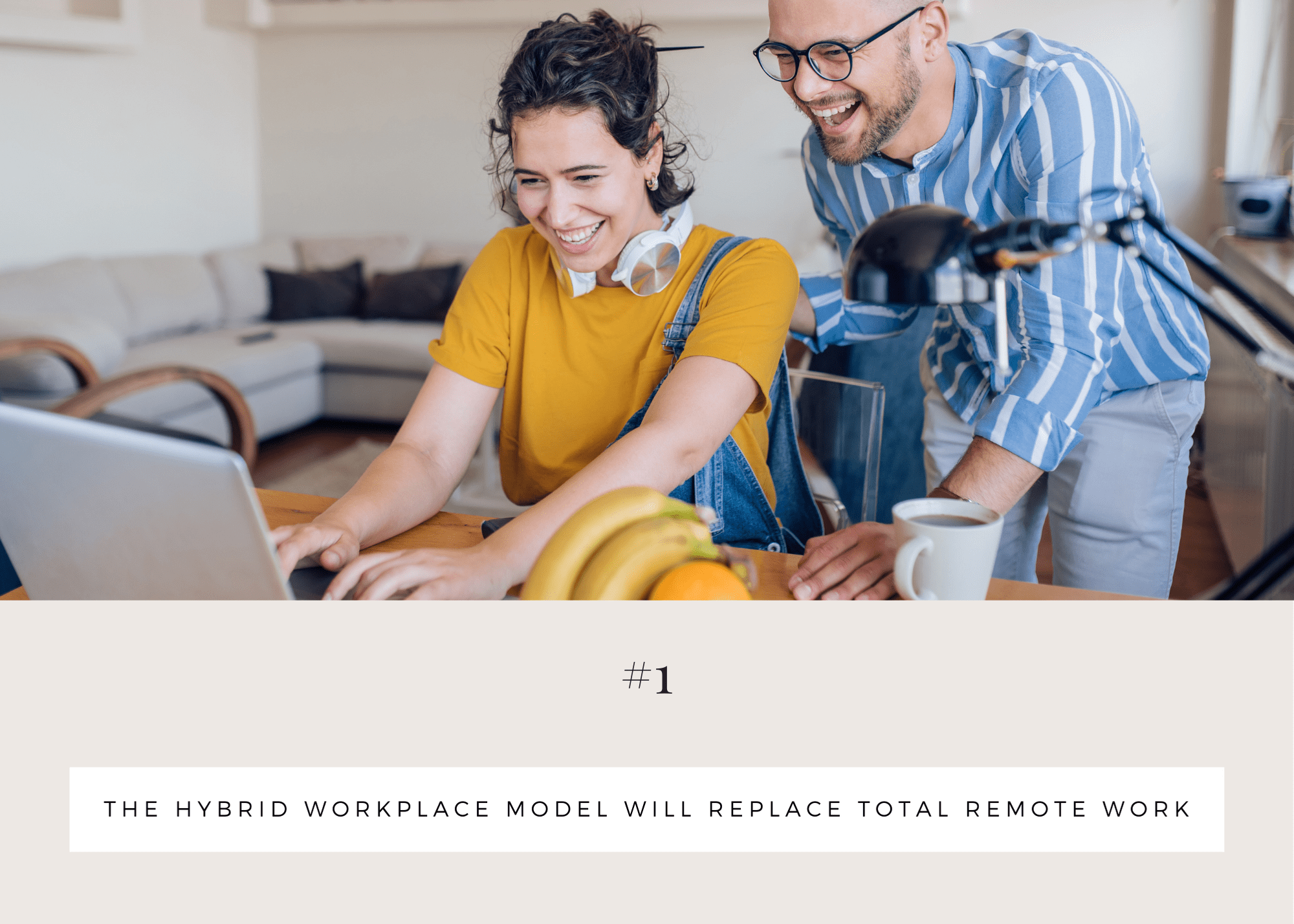
Workforce trend predictors expert the hybrid workplace model to outpace both fully remote work and fully in-office work. The Microsoft report “The Next Great Disruption Is Hybrid Work—Are We Ready?” details a series of 2021 workplace trends. The report specifically zeros in on hybrid work. Microsoft’s report notes that “over 70 percent of workers want flexible remote work options to continue.” Over 65 percent of remote workers “are craving more in-person time with their teams.” As far as Microsoft is concerned, “the data is clear: extreme flexibility and hybrid work will define the post-pandemic workplace.” Microsoft will not be the only major company to offer hybrid work experiences for employees worldwide.
Google, Apple and other tech giants have also jumped on the hybrid bandwagon. Roy Maurer elaborates in his article “What to Consider When Moving to a Hybrid Work Model” for SHRM. Many employers prefer the hybrid workplace model over fully-remote models because it cuts down on common consequences of working solely from home. Maurer writes that “potential downsides” result from changes in norms that “culture and performance rely on.” These include “trust, cohesion and shared experiences.” A hybrid workplace model would largely remove such barriers to colleague connection and collaboration.
. # 2 E M P L O Y E R S W H O R E F U S E R E M O T E W O R K W I L L B E L E S S C O M P E T I T I V E I N A P O S T – C O V I D W O R L D .
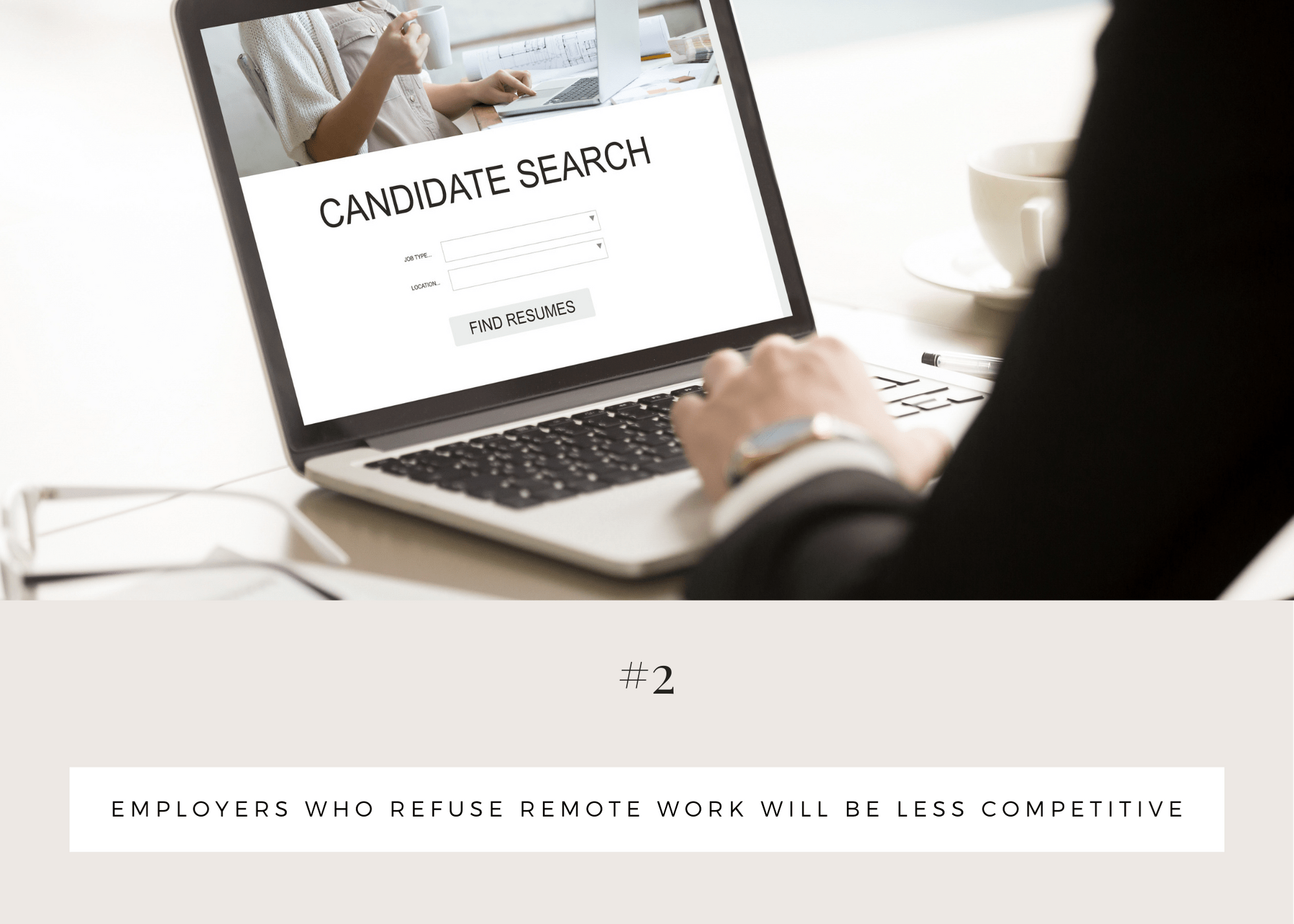
Companies that refuse to allow their employees to work remotely part- or full-time might find themselves struggling to find and retain workers. Samantha Fields explains in her article “Most who work from home want to keep doing it, study finds. Will they be able to?” for Market Watch. Quoting Kate Lister from Global Workplace Analytics, Fields writes that “‘we’ve reached the tipping point.’” By this, Lister means that there are now enough companies willing to offer remote work. As such, if you do not offer remote work, “‘you’re simply not going to be able to hold on to your people.'” You might not even be able to “‘attract the best talent.’” According to recent jobs reports, competition is already fierce for workers who could potentially work from home.
Workers actually saved more during the pandemic than was expected. As such, they are now able to be a bit choosier about how, when and for whom they return to work. In her article “U.S. hiring takes big step back as businesses scramble for workers, raw materials” for Reuters, Lucia Mutikani explains. Mutikani writes that American households are currently “sitting on at least $2.3 trillion in excess savings.” While this spells “double-digit growth” for the quarter, it also means workers have less of an incentive to return to work right away. This places workers in the unusual post-crisis position of having the upper hand over employers. As such, economists expect employers to begin luring workers back with better benefits, higher pay and hybrid work opportunities.
. # 3 E M P L O Y E R S W I L L C O M M I T T O W O R K E R W E L L N E S S A S A M E A N S O F S U R V I V A L .

Those who study labor trends in the US — like Professor Larson — expect other shifts in work culture over the next several years. The most significant of these are all rooted in wellness. Erica Volini, Jeff Schwartz and Kraig Eaton explain in their article “Diving deeper: Five workforce trends to watch in 2021” for Deloitte. Insights. Quoting Jen Fisher — Deloitte US chief well-being officer –, Schwartz, Eaton and Volini write that “organizations suddenly found themselves called upon to prioritize workers’ physical and mental well-being as a matter of survival.’” This is because executives recognized protecting the health of their workers “and alleviating their stress [was becoming] critical to operations.” In fact, Deloitte’s 2020 Global Human Capital Trends study found that 80% of respondents identified worker wellness as “important or very important.”
. WORKPLACE WELLNESS TRENDS FORECAST FOR 2021 .
Wellable’s 2021 Employee Wellness Industry Trends Report recorded an even higher number. Companies across the country are leaning into remote and hybrid work. This is despite expectations they might resist such a change due to perceived lack of control and monitoring. According to the Wellable survey, 61% of companies surveyed will not “expand on-site employee engagement activities” post-COVID. However, 93% plan to “expand virtual employee engagement activities.” 94% of respondents plan to expand virtual wellness services for their employees and 57% plan to “provide access to home care services.” 69% plan to subsidize home office setup and 49% of employers plan to “expand paid leave policy.” 89% plan to expand their use of flexible schedules and 66% plan to offer dependent care flexible spending accounts.
The latter is crucial given that caregivers in the United States are becoming younger and younger. Employers have begun responding to a workforce with different needs than those of prior generations. As of 2019, a quarter of all caregivers were Millennials, though this number has likely skyrocketed as a result of the COVID-19 pandemic. In 2020, 60% of all new caregivers were Gen Z-ers or Millennials. Corporate responsibility appears to be the overarching trend here. Year over year, more shareholders and consumers have demanded company commitment to sustainability and ethical labor practices. In a country where employee retention is fairly low, pivoting company ethos towards areas of public concern might be necessary. This wellness trend could present itself in a number of ways — from shorter work weeks to fewer daily meetings.
. # 4 A C T U A L O F F I C E S P A C E S W I L L B E D I F F E R E N T .
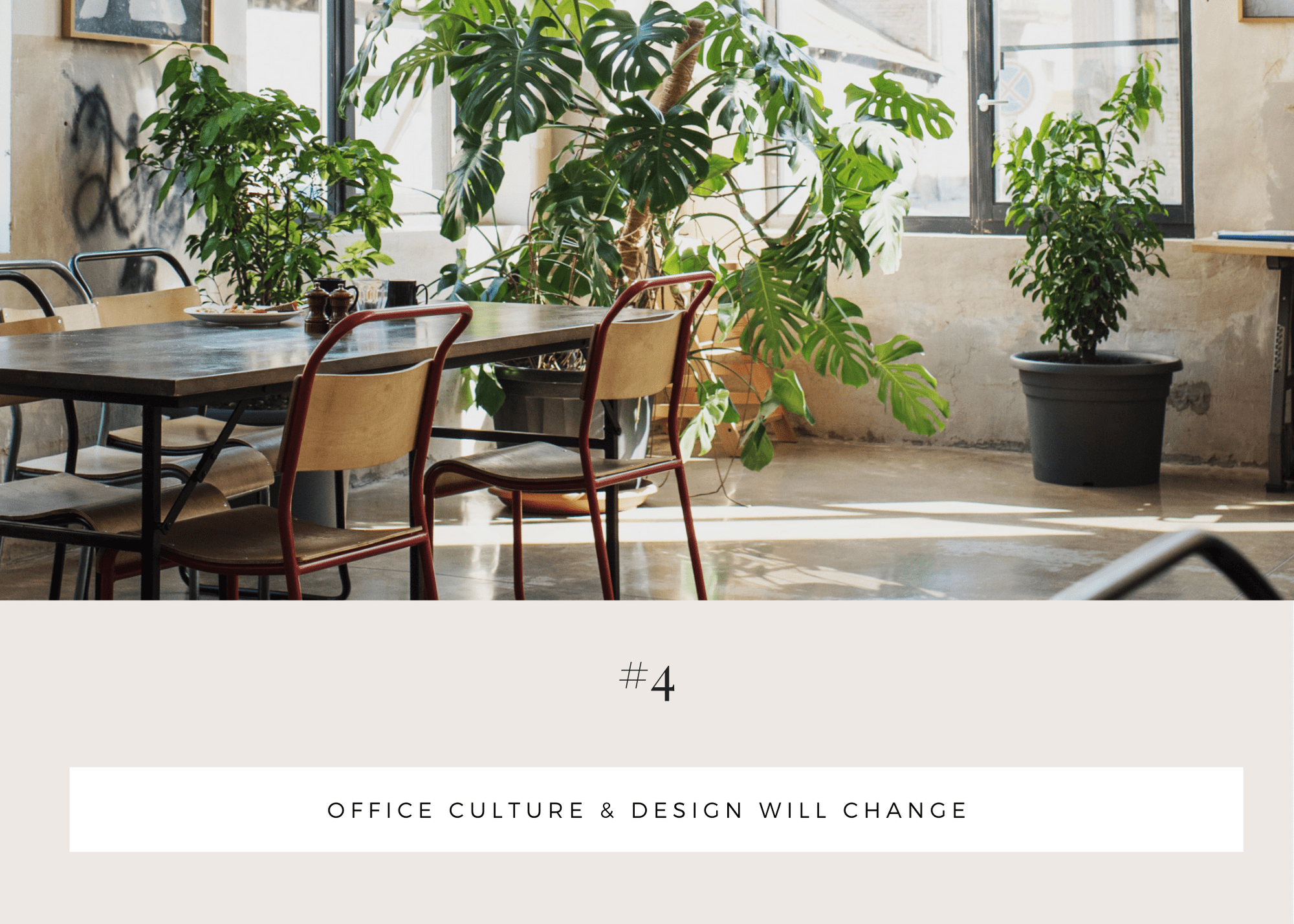
Not only will the number of in-office workers differ post-pandemic, but so will the design and culture of office spaces nationwide. As mentioned above, companies will likely prioritize the emotional connections their employees have to their work. In the article “5 ways the post-pandemic office will look very different” for Fortune, S. Mitra Kalita explains. Kalita expects “post-pandemic offices [to] focus more singularly on creating and representing the culture of a company.” This shifted focus could result in “physical spaces with more breakout rooms and gathering spots.” Virtual spaces designed for collaboration will also be a focus of companies moving forward, notes Dennis Perkins — the founder and president of Civitas. Perkins explains that both virtual and in-person spaces will become about “maintaining and building culture.” This is because “the cross contamination of ideas is very important” to innovation and growth.
Forecasters also expect companies to invest in wellness design when bringing employees back to the office. NPR public health correspondent Emily Vaughn explains in her article “Redesigning The Office For The Next 100-Year Flu (Yes, It’s Coming).” Vaughn writes that flexibility will be key — from the layout of conference spaces to the ventilation systems of entire office buildings. Architects will focus more on creating living buildings in which the outdoors is well-integrated. Office designers will likely choose to incorporate “‘living walls’ instead of bland partitions and [add] circadian-friendly lighting that brightens and dims across the workday.” Sustainable, eco-friendly materials will also become more popular as office workers continue to lobby for climate action and human health.
. # 5 T H E W O R K W E E K M I G H T S H O R T E N .

Thus far, companies across the country have committed to hybrid workplaces. However, more and more workers are requesting flexible schedules. Plus, the pandemic proved most of those meetings really could have been emails. As such, employers are also considering a shorter work week all together. In his March 2021 article “Four-Day Workweeks Are Closer To Reality,” Forbes contributor Mike Swigunski explains. Swigunski writes that “more and more workers are transitioning from a five-day workweek to a four-day workweek.”
The shift is not unprecedented — notes Swigunski — as “it wasn’t that long ago that a typical week of work was six days long.” Recent studies have shown that “fewer work hours can turn into higher productivity levels.” This means that a five-day workweek or an eight-hour workday might actually cost employers money and employees time. Just before the pandemic struck, Microsoft Japan tested the four-day workweek — to great effect. According to Swigunski, Microsoft Japan “received a 40% increase in productivity and a 23% lower electricity bill.” Overall, “employees took their time at work more seriously, finished more than expected, and helped the company save a bit of money on electricity.” Shorter shifts or workweeks could result in higher employee happiness and lower employer cost.
7 Ways to Create a Hybrid Home Office
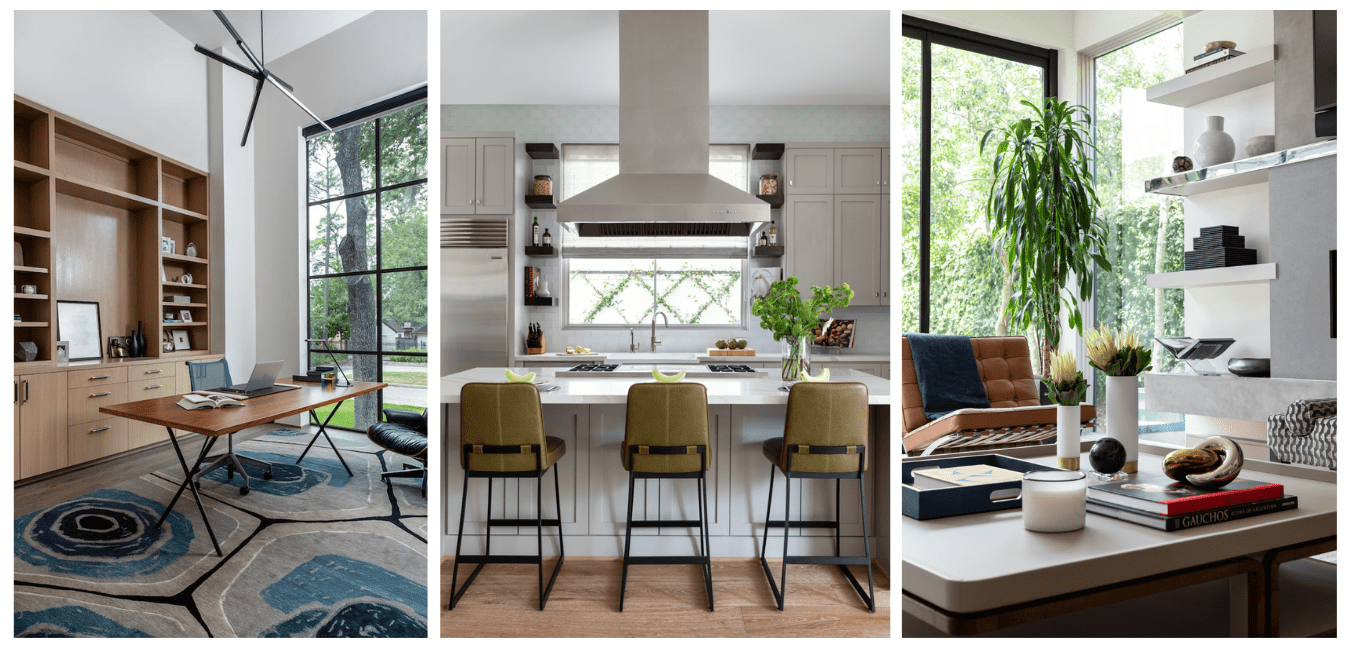
Many of us have been working remotely for the last year. However, the majority of our home offices are still not quite up to snuff. Whether your home office is a corner in your bedroom or a formal study, each could use a bit of a shake-up. Furthermore, with remote work transforming into hybrid work, even the most formal of home offices might transform into a multifunctional space over time. This switch requires a touch of ingenuity and creativity. Follow below for seven ways to create a multipurpose office space at home in 2021.
. # 1 A V O I D F L O O R S T O R A G E .
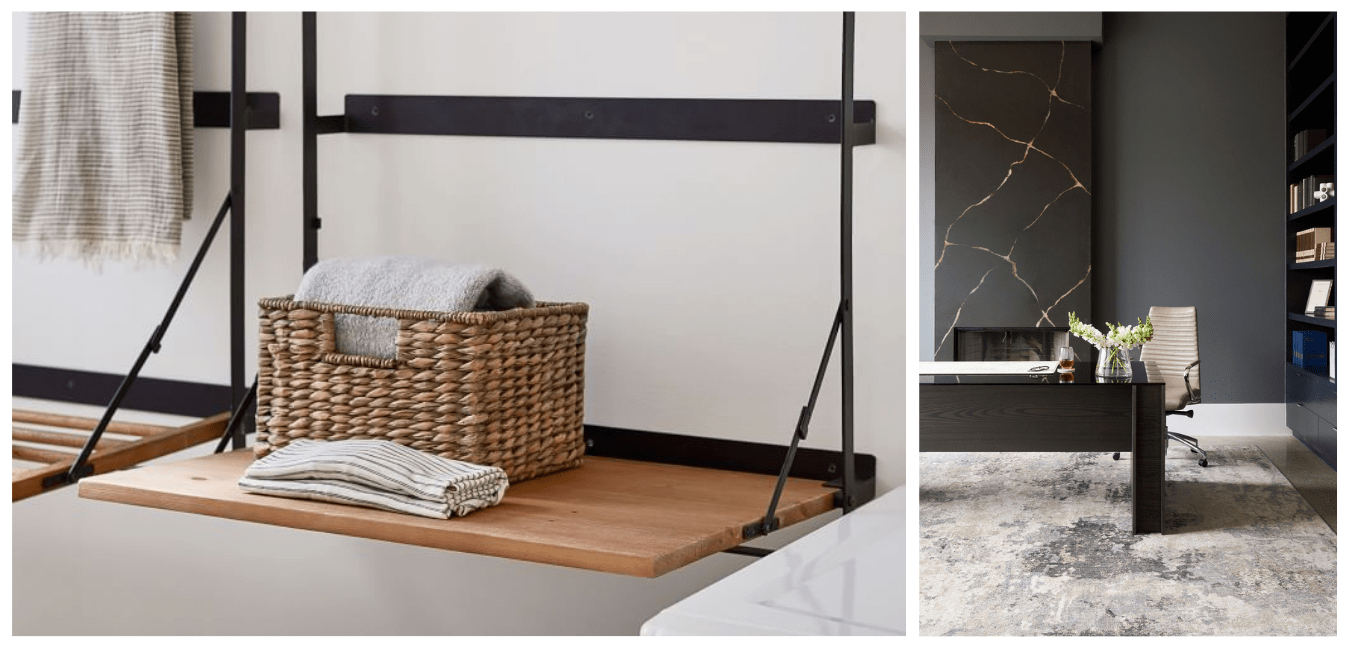
Maximize space in your home office by avoiding floor storage and opting instead for floating shelves and mounted filing cabinets. Modular storage systems are a must for any home office. They are particularly necessary in one that might function as a workspace two days a week and a yoga room the other five. To avoid misplacing carefully collated papers or restricting off-time use of your office space, consider pushing all storage to the side of the room. Floating magazine shelves, corner bookcases and filing cabinets on casters are perfect for multipurpose spaces. If using your home office as a part-time gym, craft space or rec room, consider a desk that stores your work materials.
We love secretary desks for this purpose — particularly those with a retro roll-top. In her article “The Chicest Secretary Desks You Can Buy” for House Beautiful, Brittney Morgan explains why we love them. She writes that secretary desks are a cross between “a dresser, a hutch and a desk.” For those unfamiliar, secretary desks feature “drawers and cubbies and all sorts of secret compartments.” Each of these are hidden “behind a drop-down or roll-down panel that [acts] as a desktop.” Their small-space design and attractive silhouette makes secretary desks ideal for out-of-the-way storage and flexible remote work.
. # 2 M E S H T H E D E S I G N O F Y O U R H O M E O F F I C E W I T H T H E R E S T O F Y O U R H O M E .
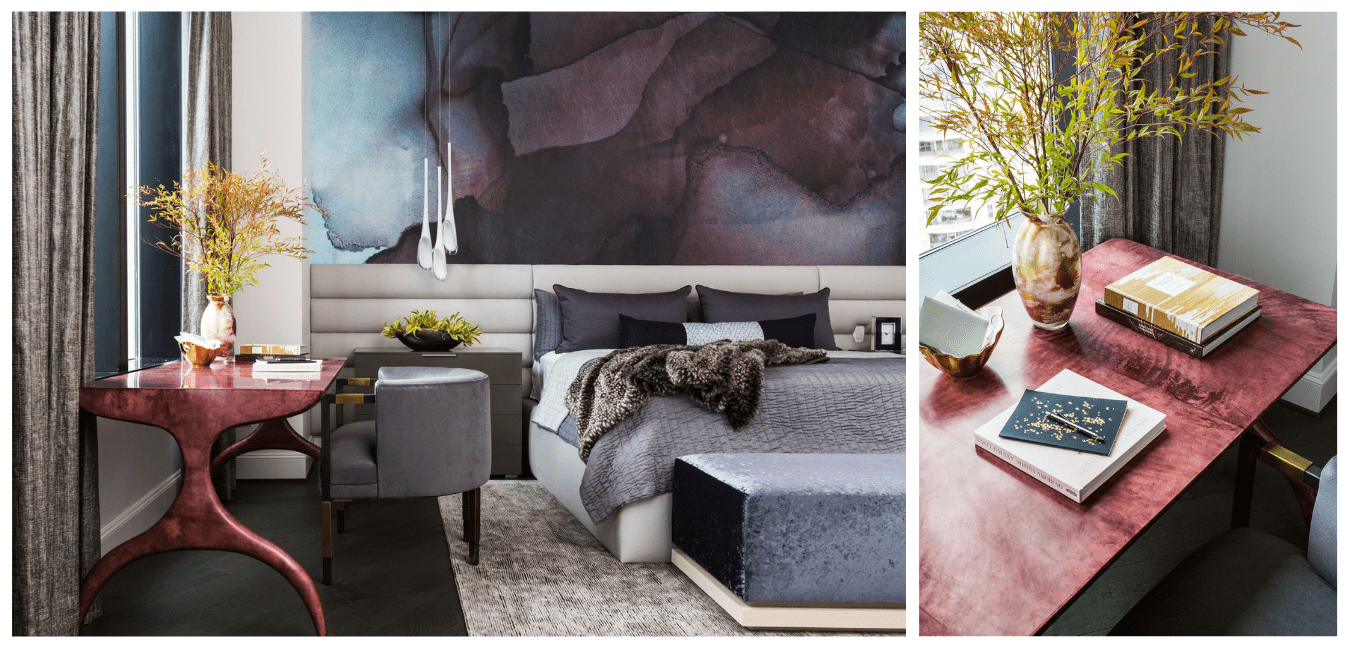
After a year of remote work, it is time to truly invest in your WFM space. Help your workstation better blend with the rest of your home by adopting similar textures, tones and thematic elements. Choose pieces that wow instead of a simple aluminum table or lackluster task lamp. If you do, your home office will cease to stick out like a sore thumb and instead will be a source of pride. For instance, if you incorporate a workspace into your bedroom, opt for a beautiful antique or designer table instead of a commercial piece. This way, if your bedroom will maintain its serene atmosphere and aesthetic vision without compromising on functionality.
. # 3 D O N ‘ T S H Y A W A Y F R O M A W K W A R D O R U N U S E D S P A C E S .
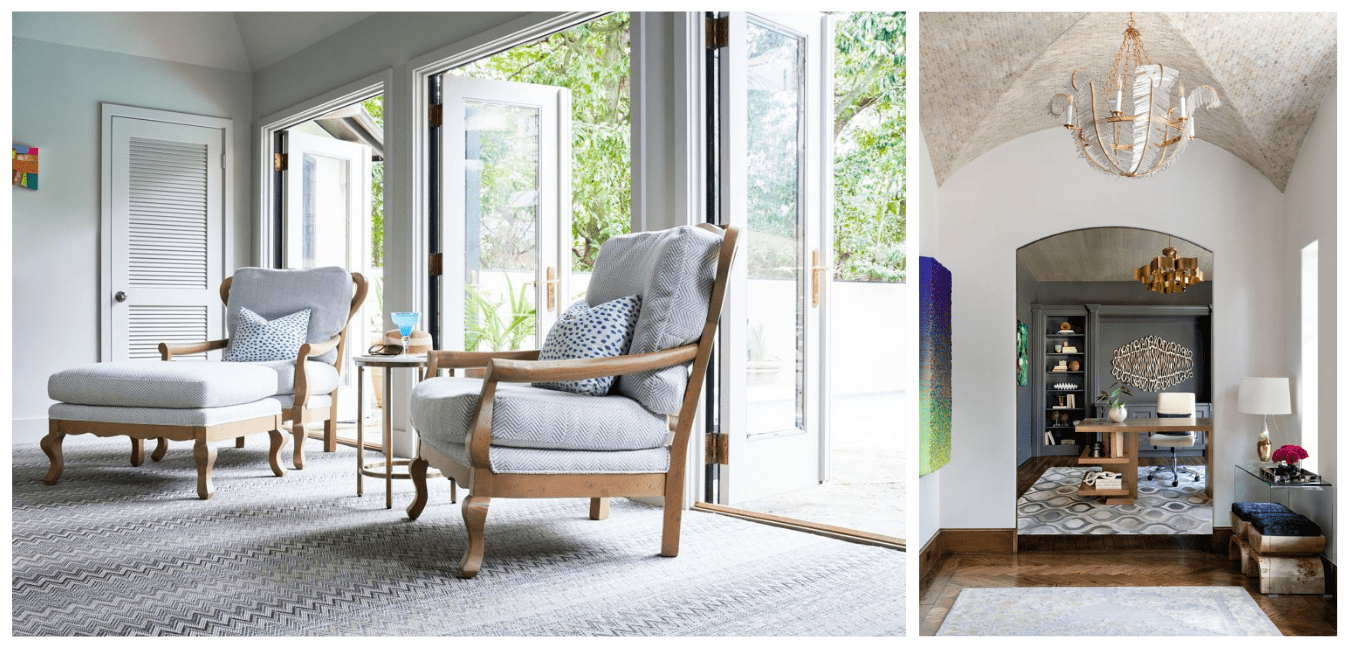
If you need a change of scenery, consider transforming your rarely used dining room or breakfast nook into a home office. Transform the alcove under your stairs, the second floor landing or your spare closet into a workspace. Converting unused spaces maximizes the functionality of your home without cramping frequently used spaces like the kitchen or living room. The Modsy article “14 Places to Put a Home Office” suggests using your dining room as a home office. This is because “it’s the most ergonomic set-up for a space you already have.” Closet offices are the perfect space-saving solution for small living rooms, laundry rooms and master bedrooms.
According to the Modsy post, homeowners can create a “cloffice” by removing the door. They can then “tuck a small desk inside and mount a few floating shelves. Finally, homeowners might choose to “hang curtains so that at the end of the work day you can…shut away your workspace.” We at Laura U love converting unfunctional spaces into miniature home offices. One of our favorites is the cozy space pictured above in the poolroom of our River Oaks Traditional Project. The Circle Drive House entryway — with its rustic but luxuriously upholstered stools and transparent, contemporary table — is another favorite.
. # 4 C O N S I D E R C O N V E R T I B L E F U R N I T U R E .
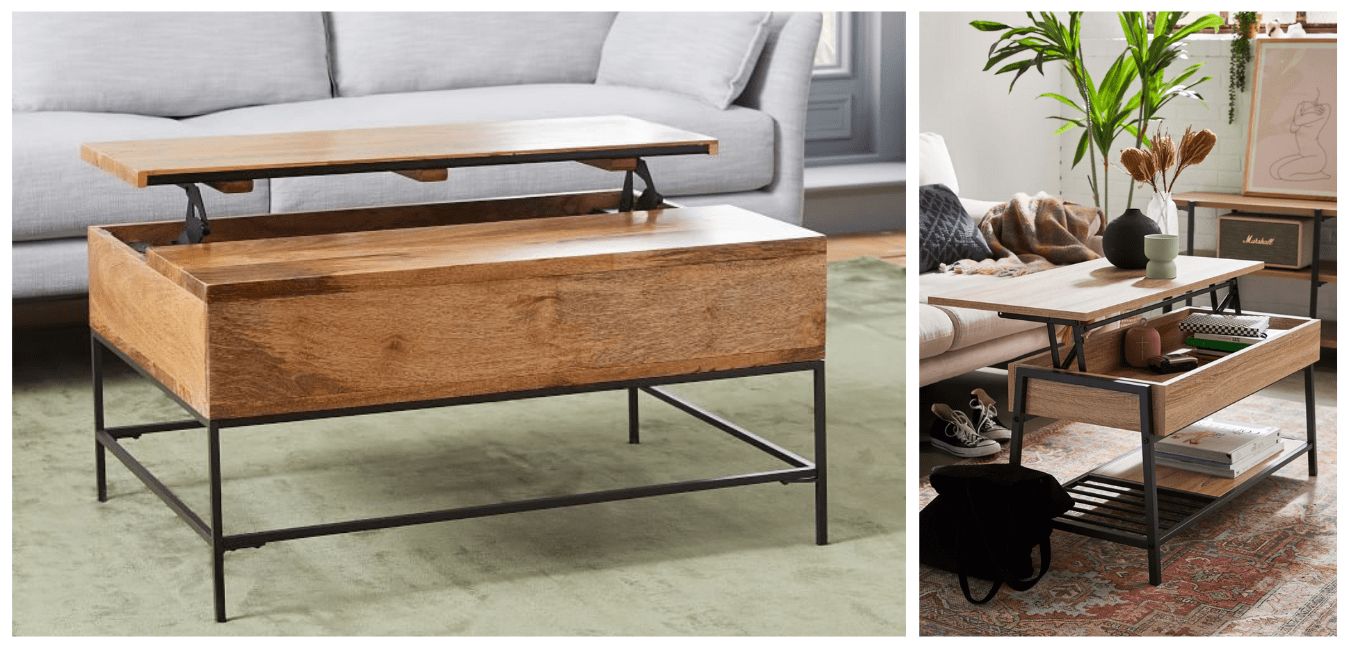
Apartments, condos and historic homes are particularly difficult to design for because they lack the necessary space for a formal home office. In a studio apartment with minimal square footage or a historic home that cannot be remodeled, we suggest considering convertible furniture. Multifunctional furniture ensures every spot in your home is used optimally. For instance, one might choose a coffee table that expands into a desk or a wall-mounted box desk that doubles as a bar. We love this Industrial Storage Coffee Table from West Elm because it offers tons of hidden storage. It also features an expandable tabletop that locks into place for use as a desk. Another favorite is the Kirby Pop-Up Coffee Table from Urban Outfitters, which functions similarly.
. # 5 E N S U R E S E P A R A T E W O R K S P A C E S F O R Y O U A N D Y O U R S P O U S E .
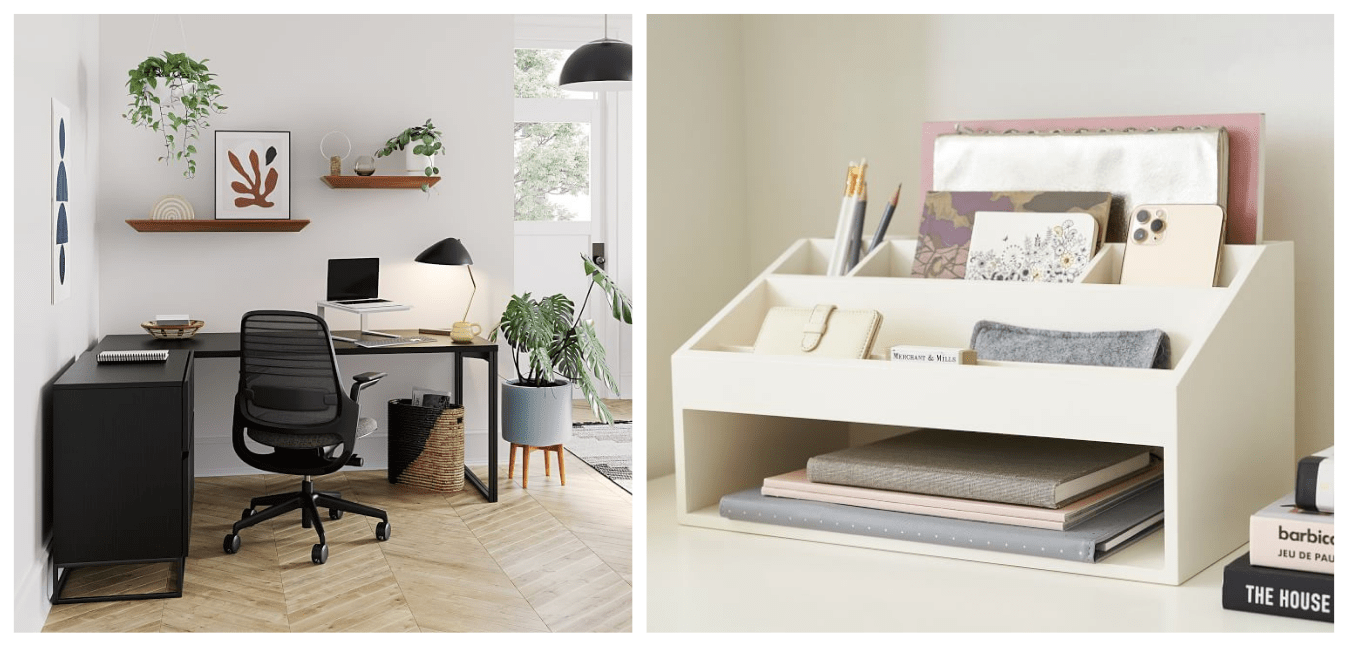
Sharing a home office — whether with children learning virtually during the school year or with a spouse year round — can be incredibly challenging. When work spaces are not properly delineated, materials are easily mixed up. This could result in a folder of drawings in your briefcase and a series of briefs in your child’s backpack. Working next to your spouse could result in fights over desk space, lighting and so much more. To ensure your materials are never mixed up and your space is effectively set apart, consider Amanda Long’s advice. Long shares a few tips in her article “Sharing a home office with your partner? Here’s how to keep the peace” for The Washington Post.
Quoting designer Shawna Underwood, Long suggests creating “two zones, so each person can personalize that space to their needs.” Perhaps her sagest piece of design advice is to stop acting like you are “designing a corporate space.” Instead, start prioritizing your actual needs at home. Split a formal office in half, adding “separate desks, separate storage and separate task lighting” for each person. Create a common area in the center with a credenza topped by snacks and a tea station.
. PUT TOGETHER A PORTABLE WORK STATION .
If possible, opt for a portable work station you can easily roll or carry from one room to the next. Portable work stations ensure you are fairly uninterrupted when your partner needs a quiet space for conference calls. The Steelcase Soto Laptop Stand from West Elm ensures you can shift from your desk to your kitchen island while maintaining an ergonomic workspace. Two prongs beneath a steel shelf allow you to slide your keyboard beneath for an easy transfer from room to room. With a drawer wide enough for a small laptop, we love the Aubrey Desktop Organizer from Pottery Barn. This piece represents another great way to keep your materials together while moving around the house.
. # 6 M A T C H Y O U R W O R K C H A I R T O Y O U R D I N I N G S E T .
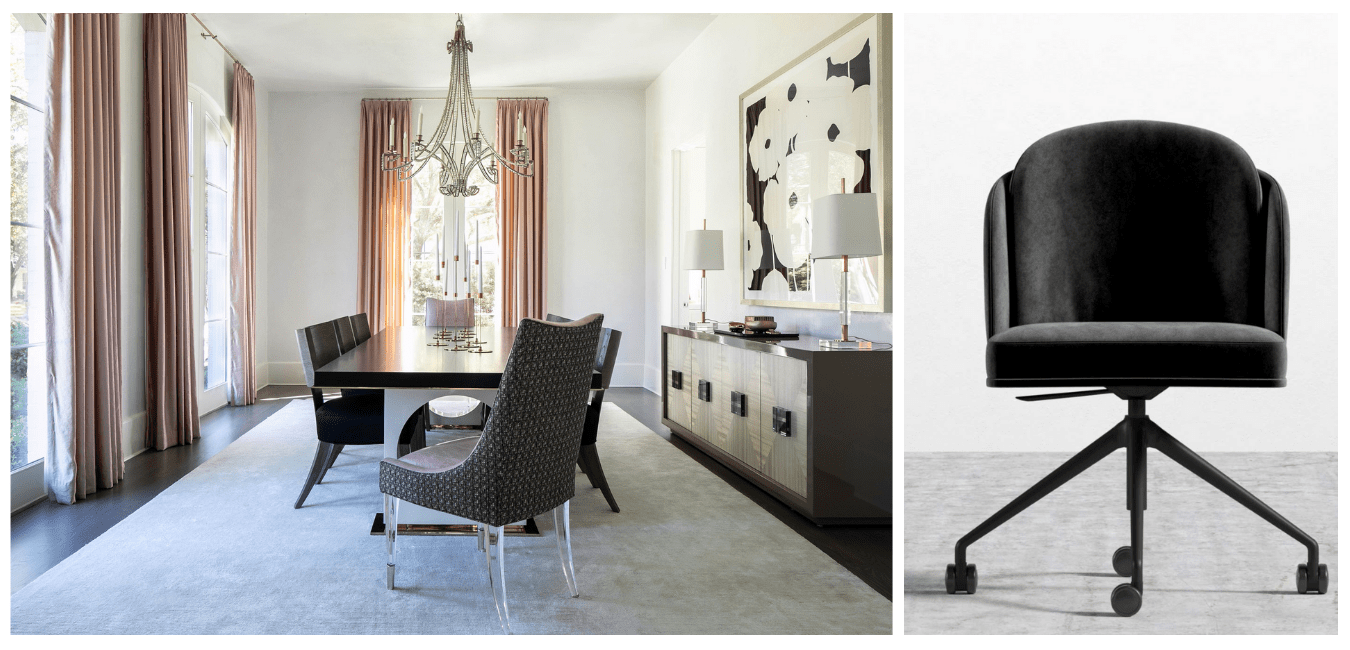
As mentioned above, a dining table is a great substitute for a traditional desk because most are set at a similar height. To maintain a homogenous aesthetic throughout your home while optimizing the functionality of each space, consider temporarily transforming your dining room into an office. We recommend doing so by matching your work chair to your dining set. Choose an ergonomic office chair crafted from similar materials, patterns, textures and tones. This way, you can leave your office chair in the dining room without disrupting the flow of the space. For instance, the Angelo Office Chair in black velvet by Rove Concepts would blend in perfectly with the Garnet Project’s dining set.
. # 7 C U R E C A B I N F E V E R B Y W O R K I N G O U T S I D E .
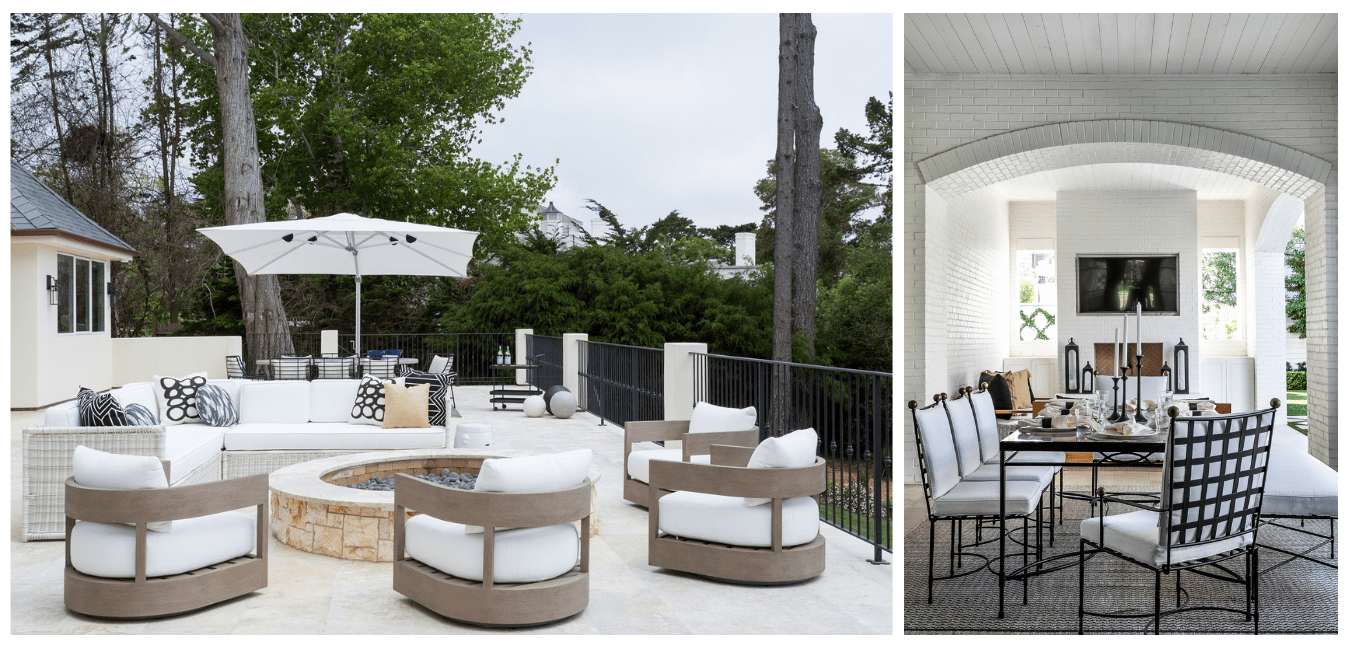
In her article “How to Move Your Home Office Outside” for The New York Times, Melanie Pinola explains how to work from your patio. From endless natural light to inspiring scenery, working outside can calm our anxieties, quiet our minds and improve our productivity. To make the transition seamless, Pinola recommends finding the “shadiest nook in your outdoor space.” Remote workers should also invest in a portable power source and considering an ergonomic chair pad. Wi-Fi extenders, canopied chairs and an anti-glare screen protector will ensure your experience is perfectly enjoyable.


